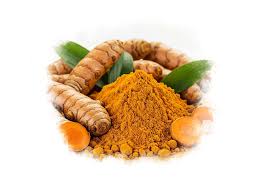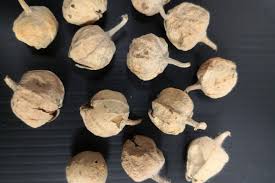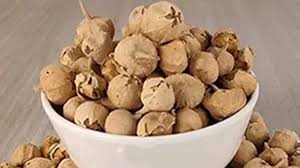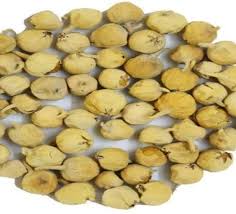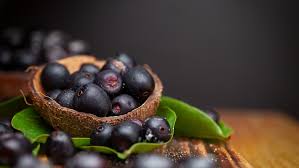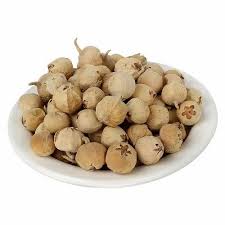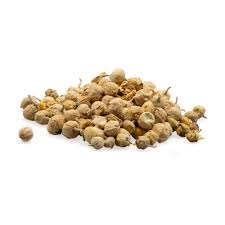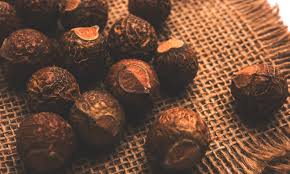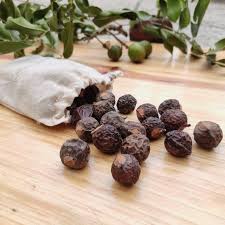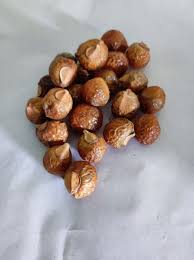
Ayurvedic Texts That Mention Paneer Phool
Ayurveda, the ancient science of life, holds a treasure trove of herbs and natural ingredients that promote holistic healing. Among these, Paneer Phool (also known as Indian Rennet, Withania coagulans, or Paneer Dodi) has been praised for centuries for its medicinal and restorative properties.
But where exactly is Paneer Phool mentioned in classical Ayurvedic literature? What do the Vedic sages and ancient practitioners say about its health benefits, doshas, and formulations?
At Dirghaanshi, where we believe in the power of Jadi Buti and traditional remedies, this article explores the Ayurvedic scriptures and Samhitas that document the uses, properties, and formulations of Paneer Phool. If you’re seeking authentic Ayurvedic validation for this herb, this guide provides both scriptural references and modern interpretations to bridge ancient wisdom with today’s health needs.
🌱 Long Description (1500+ Words)
🌼 What is Paneer Phool?
Paneer Phool, or Withania coagulans, is a shrub native to the Indian subcontinent. It produces small round berries that have been used in Ayurvedic, Unani, and folk medicine for centuries.
Common names:
Paneer Dodi
Indian Rennet
Rishyagandha (in Sanskrit)
Dodi Phool
Withania coagulans (Botanical)
Traditionally, the dried flower or berry is soaked overnight in water and consumed in the morning for a variety of health benefits — most notably for diabetes management, liver function, immunity, and digestion.
📜 Ayurvedic Texts That Mention Paneer Phool
Let’s explore where and how this medicinal herb is mentioned in classical Ayurvedic scriptures.
📘 1. Bhavaprakasha Nighantu (भावप्रकाश निघण्टु)
One of the most detailed Ayurvedic texts on herbs and their properties, Bhavaprakasha provides insight into the medicinal actions of Withania coagulans.
Mentioned as: Rishyagandha
Properties according to Bhavaprakasha:
Rasa (Taste): Tikta (bitter), Kashaya (astringent)
Virya (Potency): Ushna (hot)
Vipaka (Post-digestive effect): Katu (pungent)
Guna (Quality): Laghu (light), Ruksha (dry)
Effect on Doshas: Balances Kapha and Vata
Therapeutic Uses:
Medoroga (obesity)
Prameha (diabetes)
Shotha (inflammation)
Yakrit vikara (liver disorders)
Aruchi (loss of appetite)
👉 Dirghaanshi Insight: These properties support why Paneer Phool is widely used today in blood sugar control and weight management.
📘 2. Charaka Samhita (चरक संहिता)
While Paneer Phool is not mentioned directly by this name in Charaka Samhita, its botanical family (Solanaceae) and related herbs like Ashwagandha (Withania somnifera) are discussed in-depth.
Paneer Phool shares therapeutic similarities with Ashwagandha — especially in terms of rejuvenation (Rasayana) and Vata-pacifying properties.
📌 Relevance:
Rasayana therapy for energy, immunity
Medhya Rasayana (for cognitive function)
Kapha-Vata balancing, making it useful for diabetes and fatigue
👉 Dirghaanshi Note: Even though the herb itself is not named in Charaka, its family lineage and pharmacological similarity affirm its Ayurvedic credibility.
📘 3. Dhanvantari Nighantu (धन्वंतरि निघण्टु)
This herbal lexicon is a trusted source of Sanskrit synonyms, botanical references, and therapeutic indications. Though direct references to Withania coagulans are limited, related herbs like Dodi and Rishyagandha are mentioned.
Referenced Uses:
Antipyretic (reduces fever)
Antidiabetic support
Pitta balancing
Strengthening nerves and muscles
This further supports the herb’s modern use in neuropathy treatment in diabetics.
📘 4. Raj Nighantu / Raja Nighantu (राज निघण्टु)
A classical compendium that documents medicinal herbs and their effect on various body systems, Raja Nighantu includes Paneer Phool under regional names, and highlights its benefits in:
Glycemic control
Digestive health
Reducing inflammation
Removing toxins (Aam Pachak)
👉 Dirghaanshi Tip: Always look for the Sanskrit name “Rishyagandha” or “Dodi” when searching ancient texts, as regional and Sanskrit names vary across scriptures.
📘 5. Ayurvedic Formulary of India (AFI) – Govt. of India
In the modern Ayurvedic pharmacopeia, compiled by the Ministry of AYUSH, Paneer Phool (Withania coagulans) is included in various compound formulations.
Some classical formulations include:
Paneer Dodi Churna
Rishyagandha Ghrita
Anti-diabetic herbal decoctions (Kwath)
Yakrit Vikar Kalpa (for liver issues)
It’s validated for use in diabetes, kidney dysfunction, liver cleansing, and urinary tract issues.
🧬 Ayurvedic Properties of Paneer Phool (According to Classical Texts)
Sanskrit Term Meaning
Rasa Tikta (bitter), Kashaya (astringent)
Virya Ushna (hot in potency)
Vipaka Katu (pungent post-digestion)
Dosha Pacifies Kapha and Vata
Karma Rasayana (rejuvenative), Medohara (anti-obesity), Pramehahara (anti-diabetic)
🌿 Modern Uses Backed by Ancient Wisdom
Health Concern Ancient Texts Modern Benefits
Diabetes (Prameha) Bhavaprakasha, AFI Reduces blood sugar levels naturally
Liver issues Raja Nighantu Detoxifies liver & supports bile flow
Inflammation Dhanvantari Nighantu Anti-inflammatory & pain relief
Low immunity Charaka Samhita (via Rasayana) Strengthens body’s defense system
Weight gain Bhavaprakasha Helps manage fat metabolism
🧘 How to Use Paneer Phool – Based on Ayurvedic Texts
✅ 1. Paneer Phool Infusion (for Diabetes)
How to Prepare:
Soak 5–10 dried Paneer Dodi in 1 glass of water overnight
Mash and filter in the morning
Drink on an empty stomach
📌 Recommended by: Folk practitioners and supported in modern AFI usage for type 2 diabetes.
✅ 2. Churna (Powdered Form)
Take 1–3 grams of Paneer Dodi powder with warm water or honey after meals.
👉 Used in classical Churna recipes for digestive and metabolic issues.
✅ 3. Herbal Formulation
Combine with:
Gudmar for blood sugar control
Triphala for detox
Kutki for liver health
⚠️ Precautions & Contraindications
Not recommended during pregnancy or lactation without Ayurvedic supervision
May lower blood sugar — monitor levels if on diabetes medication
Always consult a qualified practitioner before combining with allopathic medicines
🛒 Why Choose Dirghaanshi’s Paneer Phool?
At Dirghaanshi, we go beyond just herbs — we bring scripture-backed, ethically sourced Jadi Buti to your doorstep. Our Paneer Phool is:
🌿 Wild-crafted and pesticide-free
🧼 Cleaned and sun-dried in hygienic conditions
🧪 Lab-tested for potency and purity
📦 Eco-packaged to preserve freshness
📚 Backed by authentic Ayurvedic text references
When you buy from Dirghaanshi, you buy trust, tradition, and truth.
📝 Conclusion
Paneer Phool isn’t just a folk remedy — it’s a well-documented Ayurvedic herb that’s stood the test of time. From Bhavaprakasha to modern Ayurvedic Formularies, this herb has earned its place in natural healing for conditions like diabetes, liver dysfunction, and inflammation.
By studying the Ayurvedic texts that mention Paneer Phool, we reconnect with our ancient wisdom and ensure its rightful place in modern herbal therapy.
Whether you’re a practitioner, student of Ayurveda, or someone looking for natural solutions — remember, every Jadi Buti has a story. And Paneer Phool’s story begins in the scriptures.


